Filter by
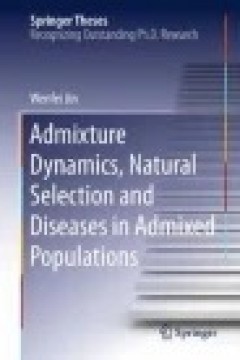
Admixture Dynamics, Natural Selection and Diseases in Admixed Populations
In this thesis, Dr. Jin presents the distribution of ancestral chromosomal segments in the admixed genome, which could provide the information needed to explore population admixture dynamics. The author derives accurate population histories of African Americans and Mexicans using genome-wide single nucleotide polymorphisms (SNPs) data. Mapping the genetic background facilitates the study of nat…
- Edition
- Ed. 1
- ISBN/ISSN
- 978-94-017-7408-6
- Collation
- XIX, 114
- Series Title
- Springer Theses
- Call Number
- KD 613 JIN a
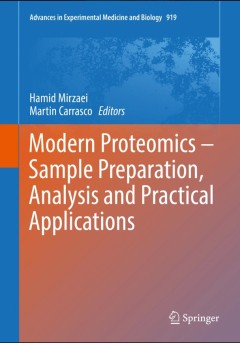
Modern Proteomics – Sample Preparation, Analysis and Practical Applications
This volume serves as a proteomics reference manual, describing experimental design and execution. The book also shows a large number of examples as to what can be achieved using proteomics techniques. As a relatively young area of scientific research, the breadth and depth of the current state of the art in proteomics might not be obvious to all potential users. There are various books and rev…
- Edition
- 1
- ISBN/ISSN
- 978-3-319-41446-1
- Collation
- IX
- Series Title
- Advances in Experimental Medicine and Biology
- Call Number
- -
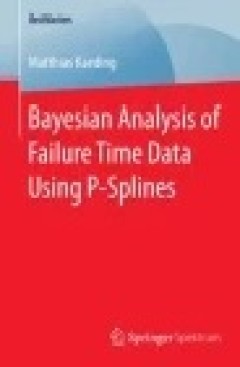
Bayesian Analysis of Failure Time Data Using P-Splines
Matthias Kaeding discusses Bayesian methods for analyzing discrete and continuous failure times where the effect of time and/or covariates is modeled via P-splines and additional basic function expansions, allowing the replacement of linear effects by more general functions. The MCMC methodology for these models is presented in a unified framework and applied on data sets. Among others, existin…
- Edition
- -
- ISBN/ISSN
- 978-3-658-08393-9
- Collation
- IX, 110
- Series Title
- -
- Call Number
- 570.285

Translational Biomedical Informatics
This book introduces readers to essential methods and applications in translational biomedical informatics, which include biomedical big data, cloud computing and algorithms for understanding omics data, imaging data, electronic health records and public health data. The storage, retrieval, mining and knowledge discovery of biomedical big data will be among the key challenges for future transla…
- Edition
- 1
- ISBN/ISSN
- 978-981-10-1503-8
- Collation
- VI, 332
- Series Title
- Advances in Experimental Medicine and Biology
- Call Number
- -
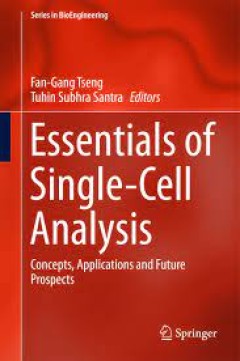
Essentials of Single-Cell Analysis Concepts, Applications and Future Prospects
This book provides an overview of single-cell isolation, separation, injection, lysis and dynamics analysis as well as a study of their heterogeneity using different miniaturized devices. As an important part of single-cell analysis, different techniques including electroporation, microinjection, optical trapping, optoporation, rapid electrokinetic patterning and optoelectronic tweezers are des…
- Edition
- -
- ISBN/ISSN
- 978-3-662-49118-8
- Collation
- 127 b/w illustrations, 15 illustrations in colour
- Series Title
- -
- Call Number
- -
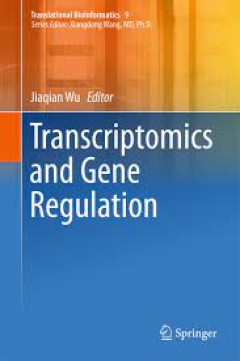
Transcriptomics and Gene Regulation
This volume focuses on modern computational and statistical tools for translational gene expression and regulation research to improve prognosis, diagnostics, prediction of severity, and therapies for human diseases. It introduces some of state of the art technologies as well as computational and statistical tools for translational bioinformatics in the areas of gene transcription and regulatio…
- Edition
- 1
- ISBN/ISSN
- 978-94-017-7450-5
- Collation
- X, 185
- Series Title
- Translational Bioinformatics
- Call Number
- -
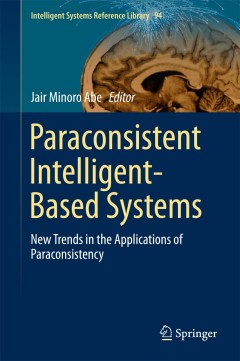
Paraconsistent Intelligent-Based Systems : New Trends in the Applications of …
This book presents some of the latest applications of new theories based on the concept of paraconsistency and correlated topics in informatics, such as pattern recognition (bioinformatics), robotics, decision-making themes, and sample size. Each chapter is self-contained, and an introductory chapter covering the logic theoretical basis is also included. The aim of the text is twofold: to serve…
- Edition
- -
- ISBN/ISSN
- 978-3-319-19722-7
- Collation
- XII, 306 halaman
- Series Title
- Intelligent Systems Reference Library
- Call Number
- 006.7 PAR
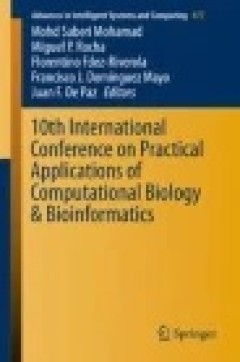
10th International Conference on Practical Applications of Computational Biol…
Biological and biomedical research are increasingly driven by experimental techniques that challenge our ability to analyse, process and extract meaningful knowledge from the underlying data. The impressive capabilities of next generation sequencing technologies, together with novel and ever evolving distinct types of omics data technologies, have put an increasingly complex set of challenges f…
- Edition
- -
- ISBN/ISSN
- 978-3-319-40126-3
- Collation
- -
- Series Title
- Advances in Intelligent Systems and Computing
- Call Number
- 005.642

The Tomato Genome
This book describes the strategy used for sequencing, assembling and annotating the tomato genome and presents the main characteristics of this sequence with a special focus on repeated sequences and the ancestral polyploidy events. It also includes the chloroplast and mitochondrial genomes. Tomato (Solanum lycopersicum) is a major crop plant as well as a model for fruit development, and the av…
- Edition
- -
- ISBN/ISSN
- 978-3-662-53389-5
- Collation
- -
- Series Title
- -
- Call Number
- -

Modern Proteomics – Sample Preparation, Analysis and Practical Applications
This volume serves as a proteomics reference manual, describing experimental design and execution. The book also shows a large number of examples as to what can be achieved using proteomics techniques. As a relatively young area of scientific research, the breadth and depth of the current state of the art in proteomics might not be obvious to all potential users. There are various books and rev…
- Edition
- 1
- ISBN/ISSN
- 978-3-319-41446-1
- Collation
- IX, 533
- Series Title
- Advances in Experimental Medicine and Biology
- Call Number
- -
 Computer Science, Information & General Works
Computer Science, Information & General Works  Philosophy & Psychology
Philosophy & Psychology  Religion
Religion  Social Sciences
Social Sciences  Language
Language  Pure Science
Pure Science  Applied Sciences
Applied Sciences  Art & Recreation
Art & Recreation  Literature
Literature  History & Geography
History & Geography